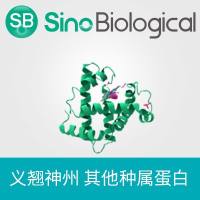Rapid Identification of Cloned HIV-1 Fragments
互联网
1108
Genetic analysis of HIV-1 frequently involves molecular cloning. The general laboratory approach of identifying a desired molecular clone after a successful transformation includes picking colonies, growing stationary-phase bacterial cultures, isolating plasmid DNA using any number of DNA isolation protocols, and, finally restriction endonuclease mapping of the molecular clones (1 ,2 ). The approach is time-consuming and labor-intensive. It may take several days before the correct clone can be identified. An alternative but equally time-consuming approach is the procedure of colony filter hybridization (1 ,2 ). This procedure includes transferring bacterial colonies to a nitrocellulose or nylon membrane, denaturing plasmid DNA in situ , hybridizing to a radioactive or chemiluminescent labeled probe, washing off the excess probe, and, finally, exposing the filter to X-ray film. To simplify clone identification, vectors containing the lacZ promoter and a partial lacZ gene encoding the α-fragment of β-galactosidase were developed (pUC vectors) (3 ,4 ). Upon induction by IPTG (isopropyl-β-D -thio-galactopyranoside), the expressed β-galactosidase could cleave X-gal (5-bromo-4-choloro-3-indoyl-β-D -galactopyranoside) and turn the colonies blue. Colonies were white when an insert interrupted the reading frame of the β-galactosidase. However, the blue/white color selection was not absolute due to the leakiness of the lacZ gene expression.









